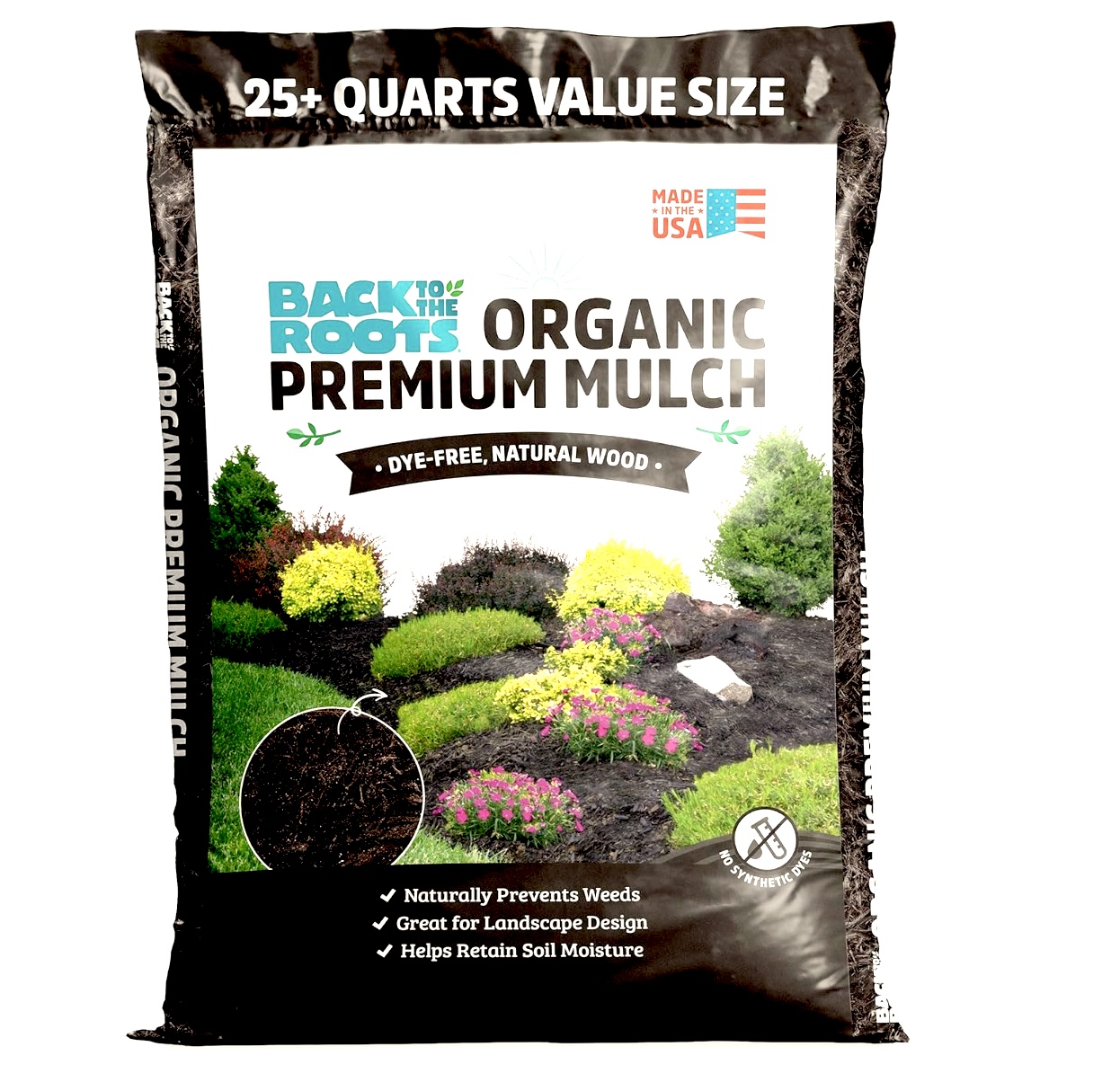Japanese Maple Leaves Turning Brown? Here Are 4 Reasons Why – And What You Can Do To Help
While some ornamentals flourish in summer, others can get sulky. Japanese maple leaves turning brown is a sign something is wrong – here's why your acer is off color

Amy Draiss
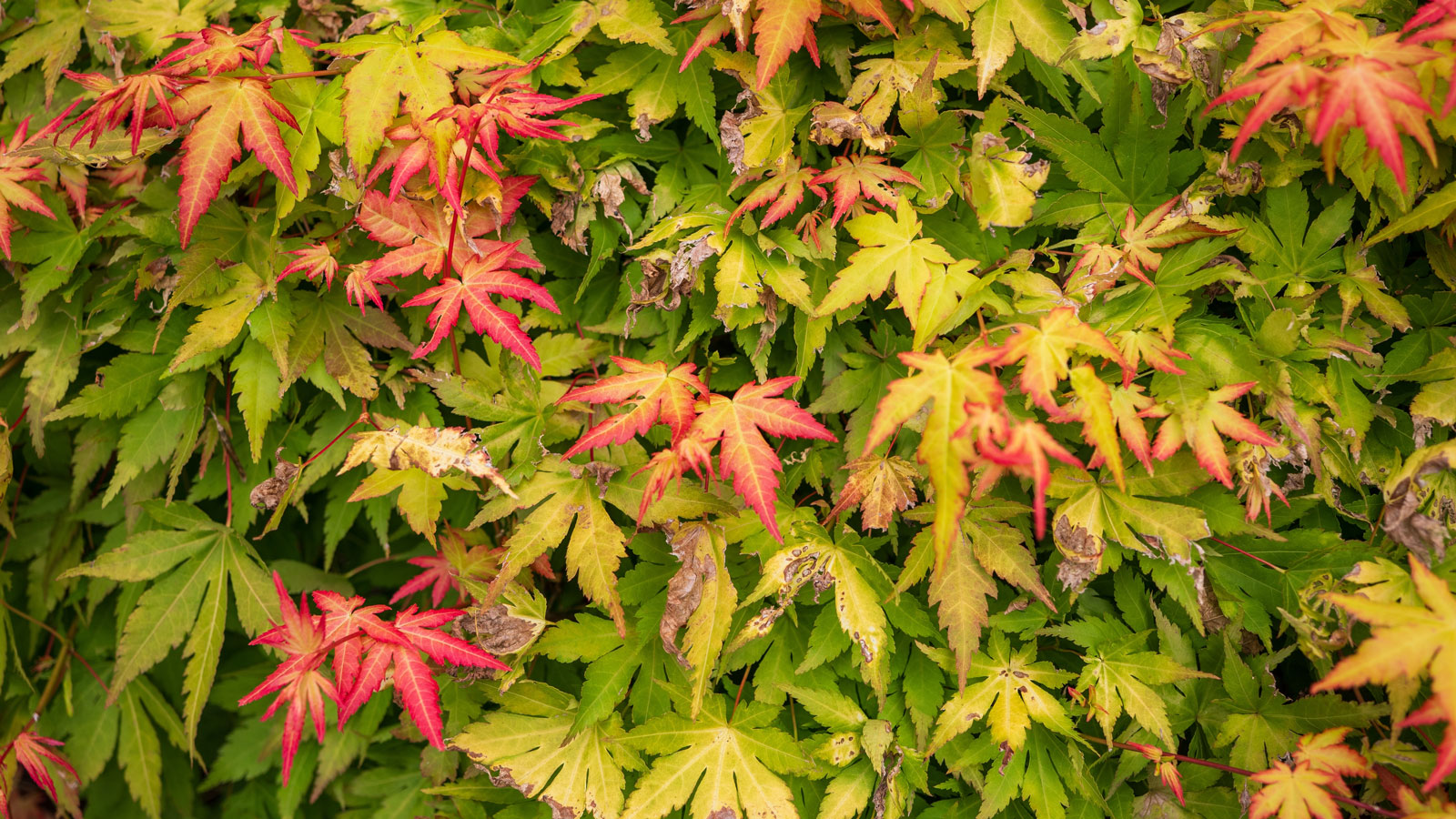
It’s possibly a shameful thing to admit, but I only recently felt like I could properly care for a Japanese maple (Acer palmatum or A. japonicum). For the longest time, I thought these trees were difficult to please. Even though they are popular in small gardens, I was always living on the edge of built-up urban sprawls, and couldn’t reconcile my modest city dwellings with what I perceived as a relatively high maintenance (though lovely) plant.
In recent years, having adopted a weeping dwarf laceleaf, I’ve revised my opinion a lot. My acer has proven to be a lot more resilient and adaptable than I gave him credit for. While there are a few specific Japanese maple care needs that are ‘make or break’, most gardens can accommodate these unique arboreal wonders in some way. Their beauty, after all, is in their relatively compact form. The trick is to give them regular attention, even if it’s just to check in – and to respond swiftly if they look peaky.
Recent weather patterns being erratic, my acer started to look a little off-color over summer. With Japanese maple leaves turning brown, I had to do a little trouble-shooting. So I figured this was a useful opportunity to share some of the best approaches for tackling acers with brown or curling leaves. Hopefully, these pointers will give you a quick solution – and help you nudge them back to health. The last thing you want is a grumpy Japanese maple that fails to produce those glorious fall colors!
Why Are Japanese Maple Leaves Turning Brown?
Although Japanese maples are generally fairly low maintenance trees, they can be sensitive to environmental factors. Some Japanese maple varieties are certainly more vulnerable to extremes of weather – particularly those really feathery and lacey leaf types. Summer can often be filled with dramatic highs and lows, sometimes from one day to the next. And while acers aren’t overly fussy about specific soils or shady corners, the right location and situation counts for a lot with these delicately flamboyant garden ornamentals. Get this wrong, and you may well see evidence of Japanese maple leaves burning.
Not only that, but sometimes we are tempted to do the right things at the wrong times when it comes to acer care – simply because we might believe that it will help them get ready for the cooler months. Ironically, we might often make things worse by thinking we are helping them out. Luckily, they are incredibly good at showing us that they have a problem that needs addressing – and one of the biggest ways they flag up problems is by using their leaves. So if you can see Japanese maple leaves curling or looking brown, here are some of the key reasons why – plus, how you can extend their life span and help them perk up.
1. Heat (or Wind) Stress
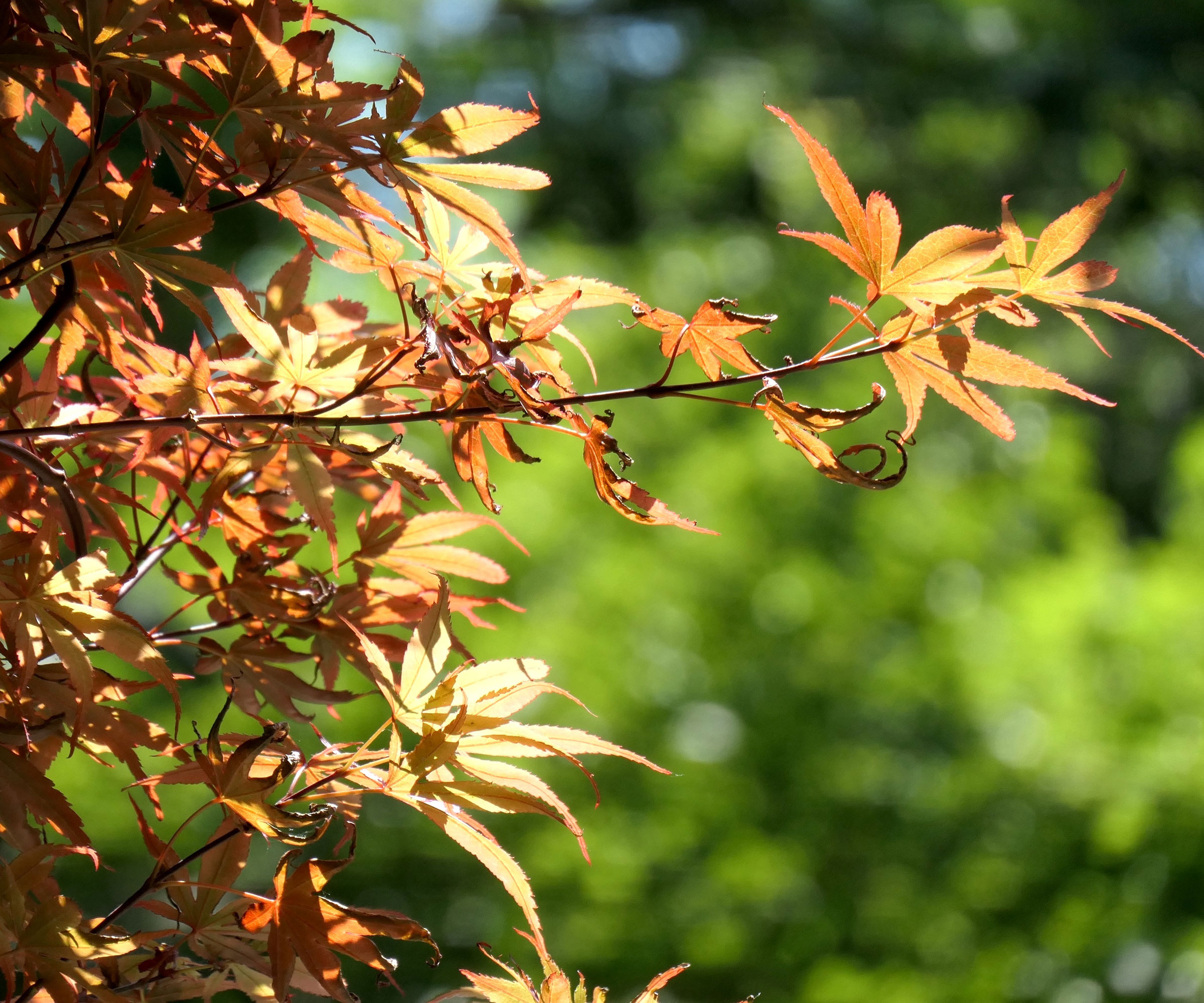
While some varieties like ‘Miss Piggy’ have a distinctive twist to their leaves, it’s not generally a good thing if you see leaves curling on Japanese maple trees – or any signs of sudden brown foliage. One of the core requirements for the Japanese maple is the need for some shade on a daily basis. During some of the more scorchio summer weather, this one cannot be overstated. Quite simply, too much exposure to direct sunlight on really hot days can be traumatic to a Japanese maple – these are not plants that love full sun.
Exposure to sunlight in fall gives rise to some extraordinary leaf color for all the right reasons – but exposure in the middle of summer is a very different matter. Cue sad-looking leaves that will start to shrivel and turn brown in the heat. The way you grow your acer will determine your next steps. Reality check here: there’s no way of magically turning the brown and crispy leaves back to a healthier tone. However, you can help to alleviate the stress related to heat exposure.
Potted Japanese maples can be moved to a cooler part of the garden – ideally to a part of the yard where you receive morning sun and afternoon shade (to protect against the glare common with afternoon heat). For Japanese acers in the ground, consider adding a protective cover around the acer if possible. Another way of at least keeping the roots of the plant cool is to add a layer of protective mulch such as bark chips or Back to the Roots Organic Mulch, available from Amazon. Too much exposure to winds can also cause stress to the plant. Again, a cover such as a screen or windbreak can help.
For anyone looking to expand their collection of Japanese maples, it’s worth factoring this into your next purchase. If you are worried that your yard receives more than its fair share of sun, consider buying a variety with some natural tolerance. Certain varieties such as ‘Fireglow’ and ‘Bloodgood’, available from Fast Growing Trees, both have good heat tolerance, and are also excellent choices for pots as well as small gardens.
2. Watering & Feeding Issues
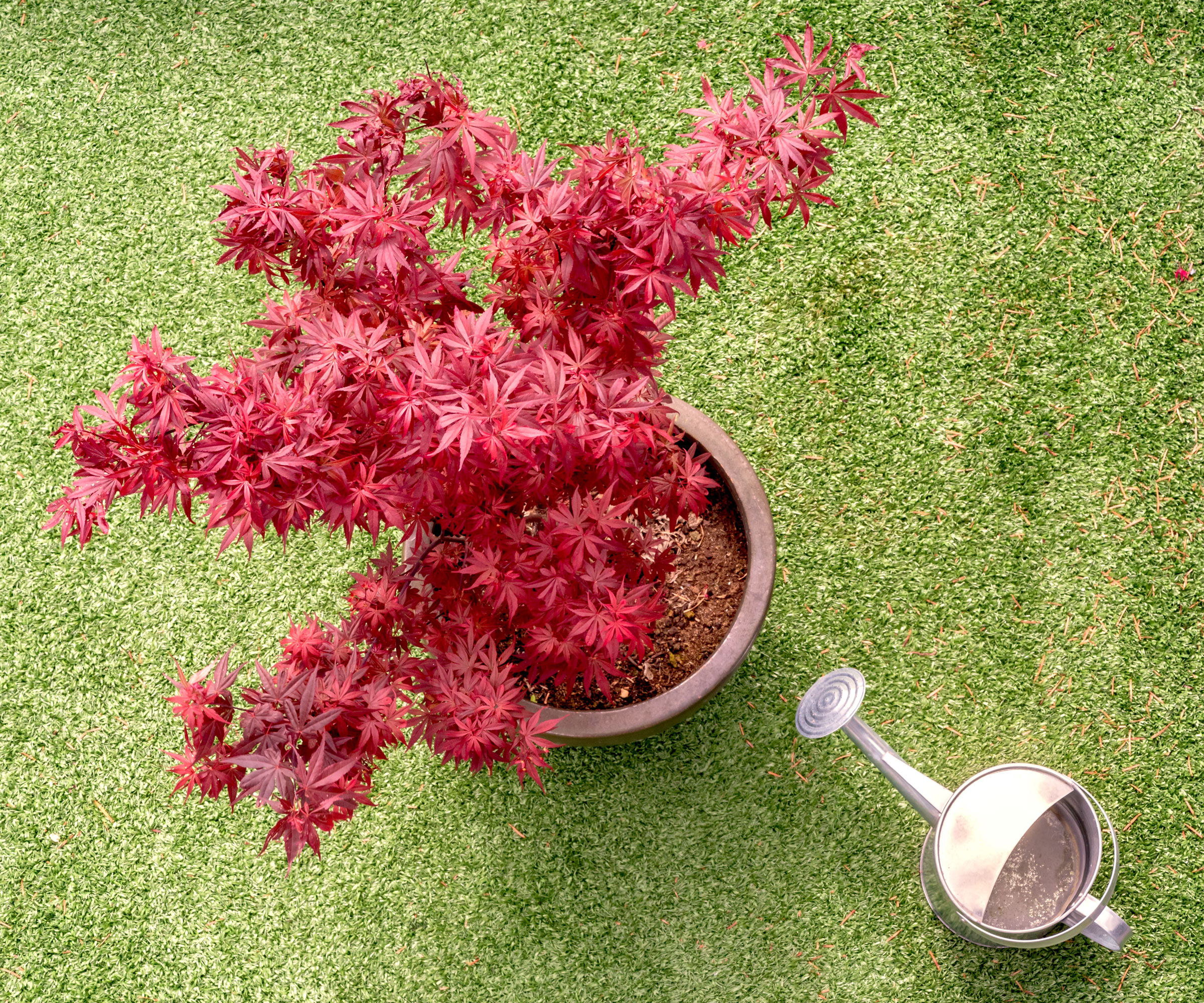
Sad to say, but Japanese maple curling leaves or brown foliage can also be an indicator of giving your plants the wrong kind of attention in terms of plant care. One of the key ways that leaves express unhappiness is because of a nutrient imbalance – and this is just as much a result of too much feeding as it is too little.
Yes, feeding a Japanese maple is important – at key times. A couple of slow-release feeds a year for mature trees can work wonders. In terms of the best feeding times, once early in spring is a good way to set them off for the season. I like to work a little fish blood and bone into the soil. You can also add a ‘top up’ feed in June – with my container-based acer, I’ll add a little diluted seaweed fertilizer in June. It helps with plant stress tolerance levels, assists in healthy root development and bolsters leaf resilience.
However, after June it is not a good idea to keep feeding your Japanese maple. If you are seeing brown or crispy leaves and it isn’t the result of excessive heat or sunshine, it’s possible you have been overfeeding, or you added feed too late. In this situation, just flush through with as many regular watering sessions as you can. This will help to adjust nutrient levels and reduce the risk of root damage. And don’t be tempted to reach for any more plant fertilizer until at least next spring.After June, there’s no need to feed a Japanese maple.
When you see a Japanese maple drooping leaves as well as looking a little brown around the edges, there’s a chance that watering (or the lack of) could be the culprit. These trees need plenty of moisture in the soil. That doesn’t mean letting them sit in puddles, but it does mean that they require regular deep watering – especially during the height of summer, and particularly if they are growing in pots.
If in doubt, check your soil moisture levels with a soil moisture meter, like the Raintrip 4-in-1 Soil Moisture Meter from Amazon, which also tests for nutrient levels and soil pH. Where you suspect underwatering, the great news is that this one is simple to fix! Commit to watering at regular intervals, two or possibly three times a day to keep soil moist, even if it is well draining. If that sounds like too many trips with the watering can, consider the Junredy 50ft Flexible Hose from Amazon, to save you legwork with repeat-watering.
3. Pest Problems
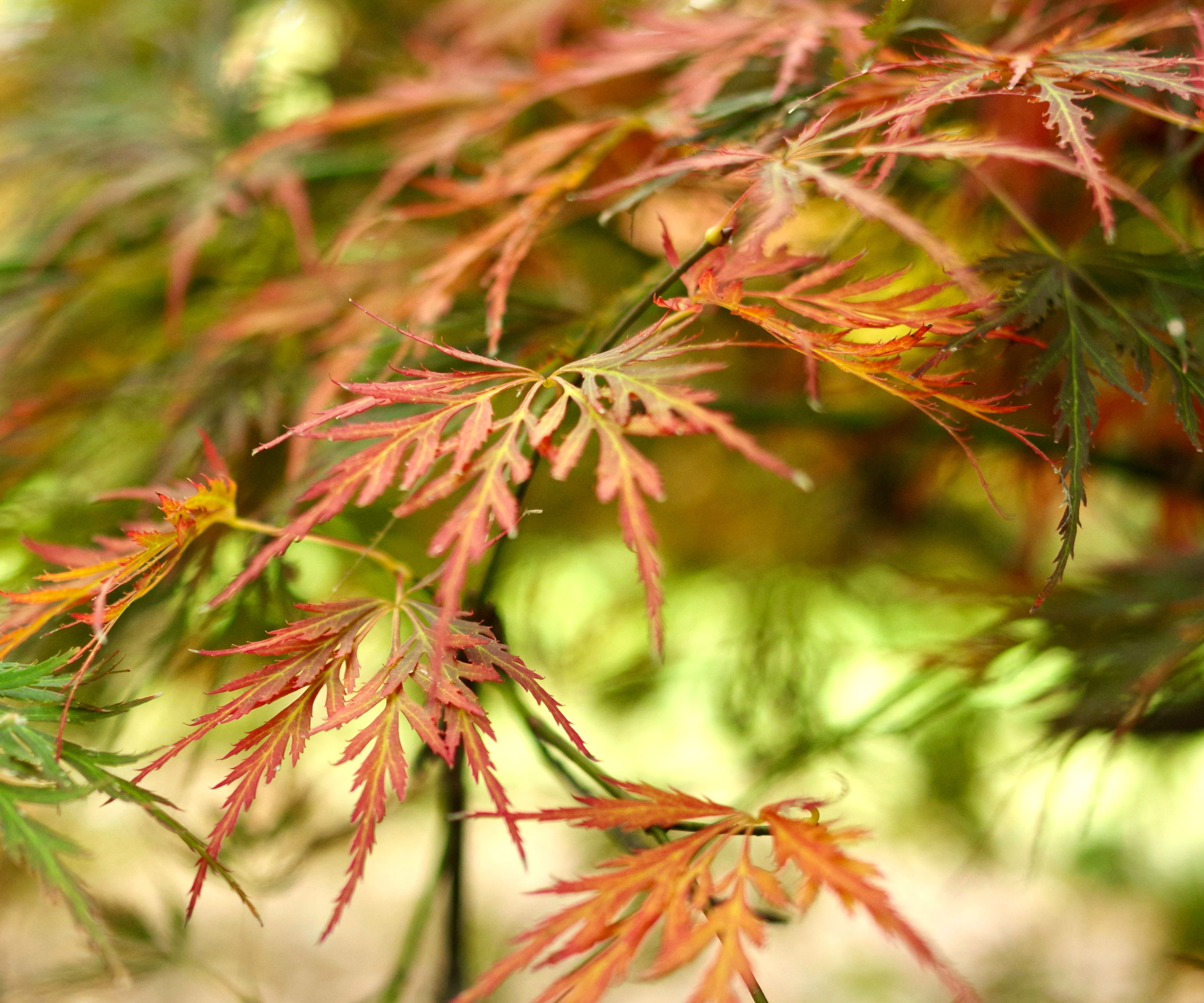
In the main, I’ve found Japanese maples to be delightfully robust and reassuringly bug free – but that isn’t a free pass during the summer months. Brown leaves and leaf scorch may not always be a result of underwatering or over-exposure to extremes of weather. There could well be a situation developing on your plant where several unwanted guests have moved in and are living there rent-free. This could either be the cause of the plant stress, or it could be an unhappy consequence of stress from some other source – either way, you need to get to the bottom of it and sort it out before it really gets out of hand.
If you see Japanese maple tree leaves turning brown and curling, going crispy, or filling with spots, look closer. Certain acer problems are less about weather systems or inadequate watering, and more about foreign agents. Where leaves look brown and distorted, it could be the result of aphids. Yellow-brown leaves could be caused by spider mites. Little brown spots on Japanese maple leaves could be caused by scale.
Sign up for the Gardening Know How newsletter today and receive a free copy of our e-book "How to Grow Delicious Tomatoes".
Alternatively, browning leaves accompanied by sudden wilting and branch dieback could be caused by verticillium wilt, a fungal problem prompted by poor circulation. Where the issue is fungal, improving air flow, watering correctly, and removing afflicted leaves should help. If you suspect aphids, a good solution can be to use a neem oil solution. Similarly, for spider mites, peppermint can be used to control pest numbers.
Use any pest preparation such as neem extremely carefully, particularly given that you are treating the plant for stress. The last thing you want to do is cause more (the leaves will be feeling peaky enough). Definitely don’t add in concentrate form – make sure it is well diluted. Apply in the evening in diluted form, gently applying to the leaves. If I suspected aphids, I would first be tempted to spray down the leaves with just water (again, later in the day or early in the morning), then allow to dry – and check to see how many aphids I was dealing with. That way, I could target individual leaves and avoid adding neem all over.
Try Captain Jack’s Neem Max Ready To Use Spray from Walmart (lightly and only on affected leaves) once you have tried spraying down with water. You can also use Captain Jack’s Neem Oil Concentrate from Walmart diluted down to a very weak solution, allowing you to control application. If you suspect spider mites may be the problem, try Mighty Mint Spray from Walmart – but again, use sparingly and test an area first before using it across larger sections of the plant.
4. Plant Is Pot Bound
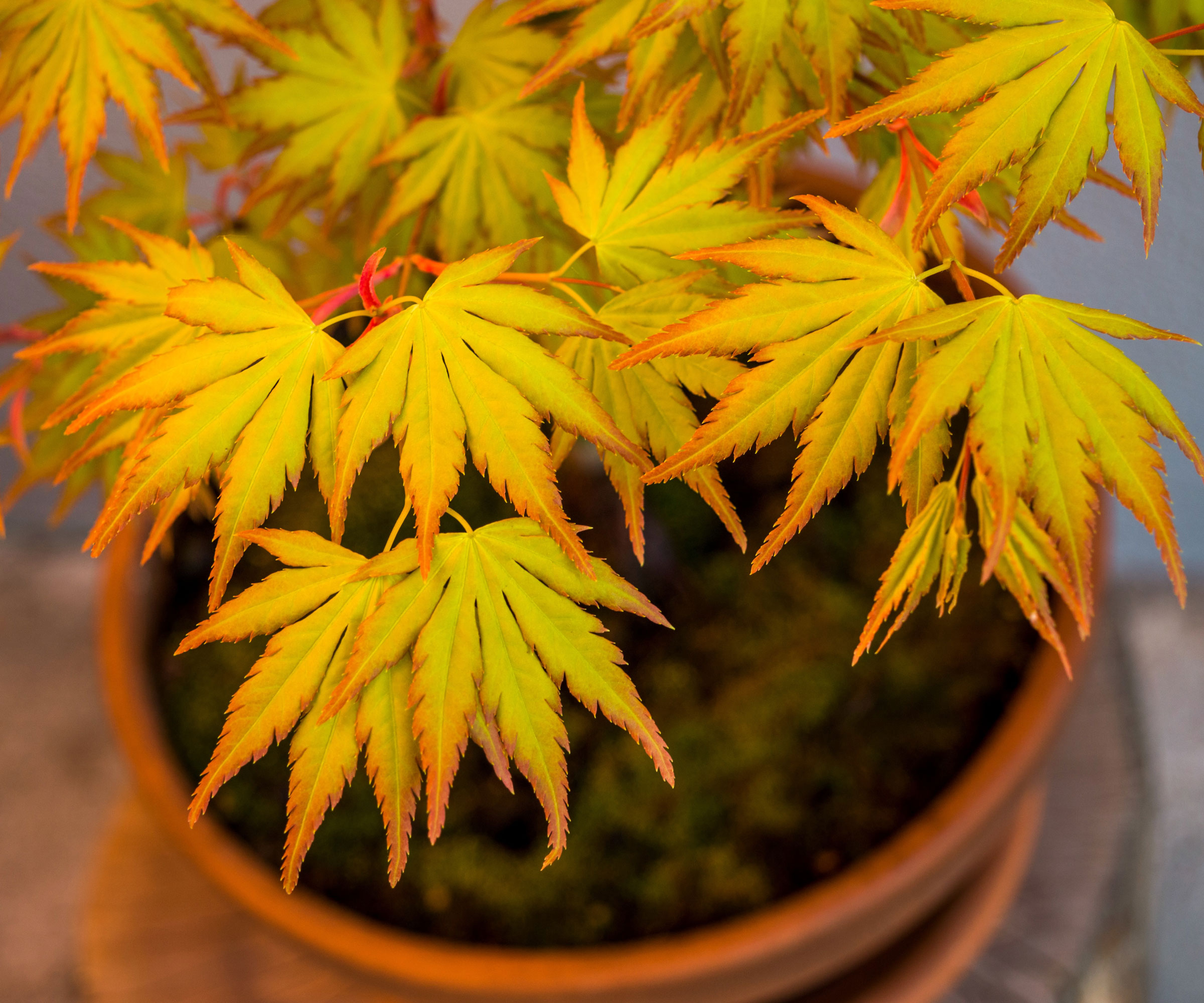
Japanese maples can thrive in containers, as long as due attention is given to moisture levels, particularly over summer. Keep them well hydrated, and they are some of the best trees to grow in pots. However, if the plant seems to be wilting even after watering then this, coupled with individual leaves turning brown or yellow, indicates another form of stress brought on by the plant being pot bound. Inspect the soil – potbound plants will generally be bone dry within an hour of being watered, if not sooner. You may even detect roots poking out near the surface of the pot. This doesn’t mean you should abandon container gardening for your acer, but it does mean you need to think about repotting.
Having identified this as the issue, I would hold off repotting your plant until late fall, when the plant is dormant. Repotting, while ultimately very good for the plant, is just another form of stress it doesn’t need right now. Instead, I would topdress the plant with a reasonably small amount of potting soil to tide it over until you can repot it. It should be ok to do this during summer – just make sure what you add is well draining. This should help give the plant some nourishment and help balance moisture levels temporarily until you can pot up.
When you do come to pot up your acer, go for a container that is a couple of inches wider in diameter. Tease out any circling roots, and consider whether you might need to give your Japanese maple a light pruning (this is usually a good idea every few years to help alleviate and prevent congestion). These plants are happiest in containers made of wood (particularly larch), as long as they are well draining. The Classic Home & Garden Acacia Barrel Planter from Amazon is an excellent option for durability and good oil content for resistance to rots.

Janey is a former assistant editor of the UK’s oldest gardening magazine, Amateur Gardening, where she worked for five years. For the last few years, she has also been writing and editing content for digital gardening brands GardeningEtc and Homes & Gardens. She’s taken part in a range of conservation and rewilding projects for the Royal Horticultural Society (RHS) and the British Trust for Conservation Volunteers (BTCV) as a way of exploring her horticultural horizons. She is currently undertaking her RHS Level 2 certificate in The Principles of Plant Growth and Development.
- Amy DraissDigital Community Manager
